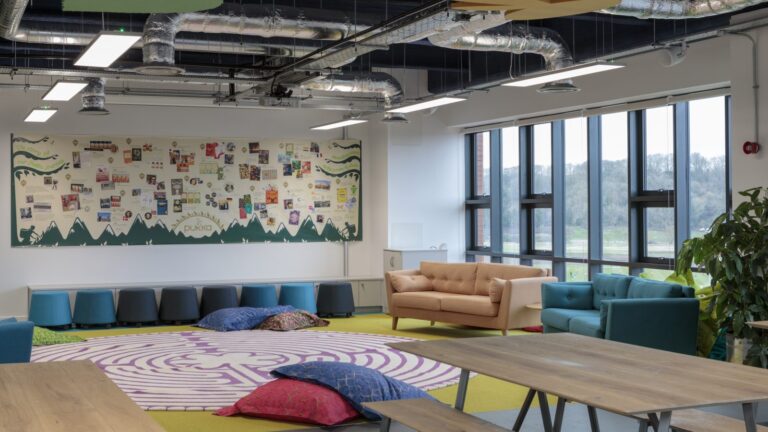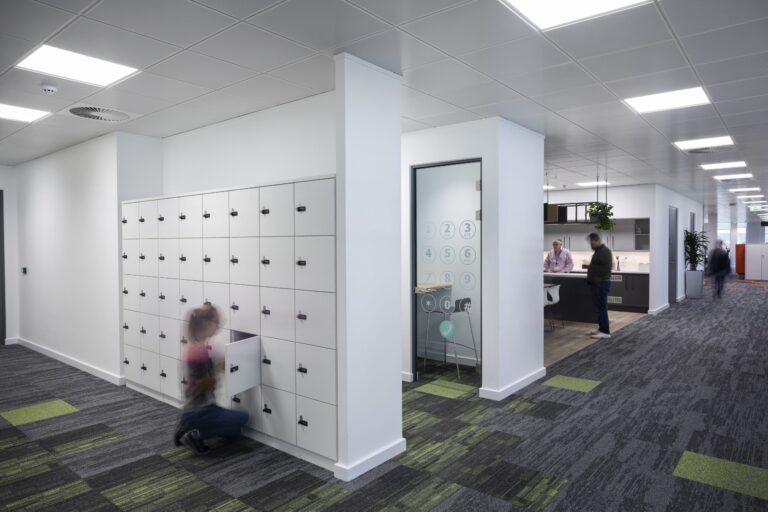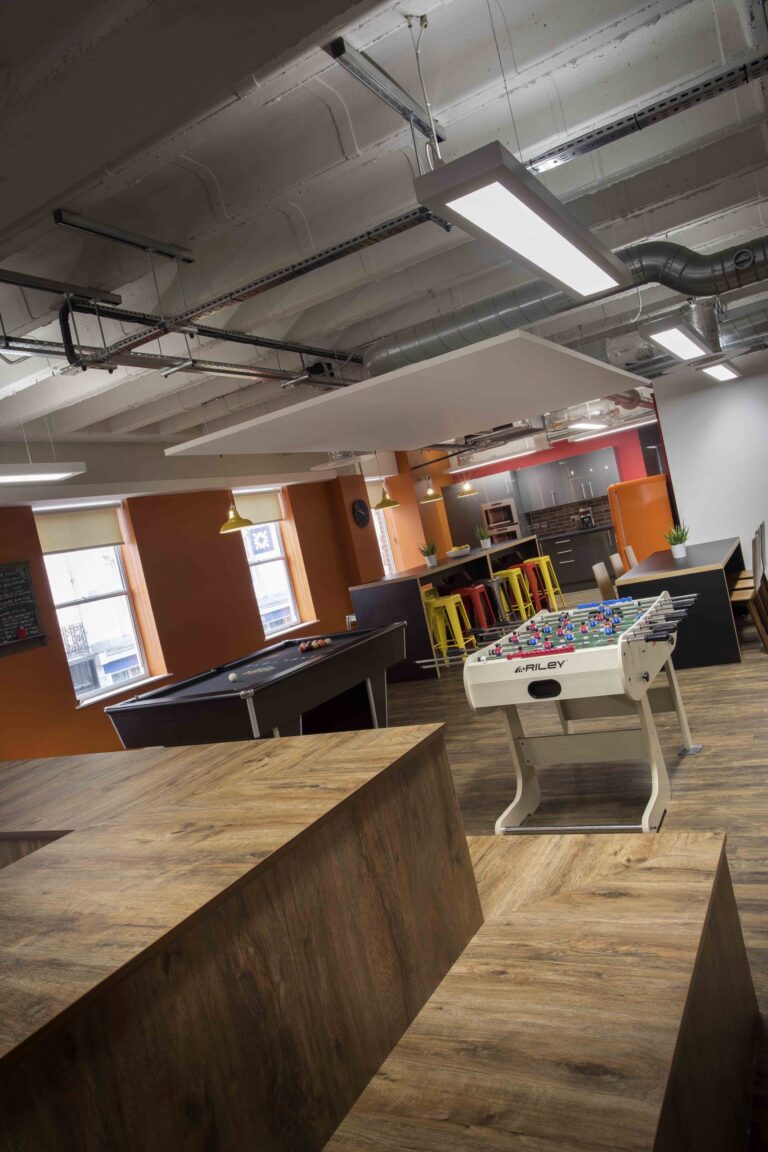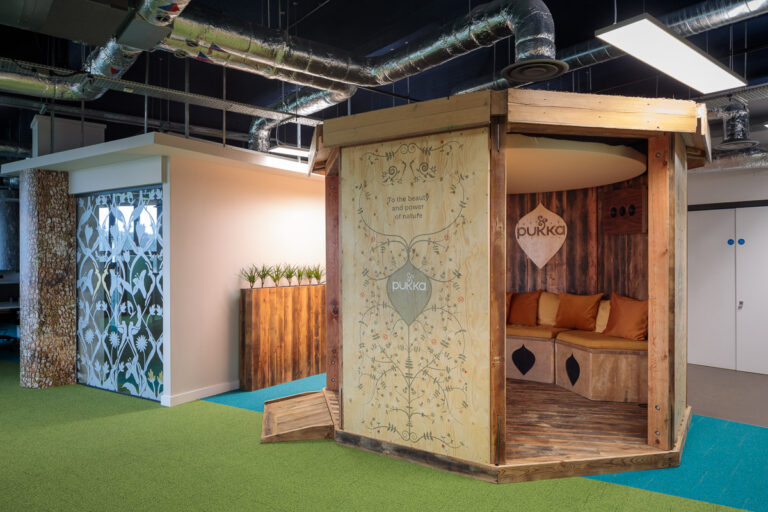
Understanding Workplace Culture & the Intangible Office.
Date
29 July 2020
Read length
4 min
Happy employees with a positive workplace culture are 12% more productive than the average employee, and an unhappy employee is 10% less productive than the average. At a time when businesses are striving to unlock greater productivity and compete in a global market place. The power of motivated and committed employees has never been more important. Yet this 22% productivity gap threatens to derail macro and micro growth across many sectors.
Tackling the gap.
At an organisational level. Tackling the productivity gap comes down to a number of factors such as process efficiency, commitment to and investment in technology. Importantly, how connected employees feel to their work, colleagues and employer.
The latter point is one of workplace culture and it is often one of the least tangible parts of an organisation’s make-up. It is culture that has the potential to drive employee loyalty, knowledge sharing, productivity and transforming change in an increasingly transient age.
The glue that binds us, “culture” refers to a set of social behaviours, values, beliefs and attitudes that unite a group of people. While culture isn’t always tangible. It has a very tangible impact on an organisation’s productivity, workplace well being and management style. Perhaps most importantly, it has the power to steer and influence the strategic direction of business.
As renowned management consultant Peter Drucker said,
“Culture eats strategy for breakfast, lunch and dinner”.
The digital age has ushered in a period of dramatic societal and demographic change. If the adjustment to digitisation is proving difficult. It’s about to get a whole lot harder as businesses strive to do more. Meet flexible working demands, respond to the gig economy and multi-career employees. Consider well being. Prepare for the integration of artificial intelligence and address the growing call for brand stewardship and authenticity. All these factors mean ongoing and exponential cultural change for an organisation.
Investing in culture and sociability.
Sociability, support and friendships are integral aspects of employees’ need to belong and therefore workplace culture. Yet as more people embrace the freedom of freelance roles. Short-term contracts and workplace flexibility, these relationships can become compromised. Loneliness is a growing issue in the UK and with a direct link to mental health issues and an increase in mortality. Employers must recognise the link between well being and productivity and think carefully about how they can protect, facilitate and augment social interaction and belonging for all employees, wherever they work.
Workplaces are evolving to suit this need, with the continuous deployment of feature-rich, activity-based workplaces. Reduced reliance on fixed, owned desks in favour of task-based work settings is encouraging more mobility within the workplace and the opportunity to develop meaningful relationships with a wide variety of colleagues. However, employee well being isn’t the only incentive for employers. A UK study found that one third of employees felt their workplace friendships helped them to be more productive. One fifth felt it boosted creativity too.
Retirement in the gig economy.
The growing gig economy as well as the increasing number of later retirements, will most certainly impact the make-up of the future workplace. The rise of the retiree-turned-consultant in particular will raise new challenges about how to keep different kinds of workers connected to an organisation and the workplace. Especially in knowledge-based sectors.
Understanding the data.
It’s not surprising then that our own annual research shows that the desire for a working environment that reflects an organisation’s values and goals continues to grow in importance for workers, year on year.
Interestingly, it is the younger generations that feel significantly less supported by their existing work and work environments other than older generations. However, there is no clear distinguishable generational difference between the five activities that are of top importance to workers. When asked, Generations Y & Z (under 40), Generation X (41-52) and Boomers (53-71) all placed the quality of working environment, head-down working and concentrating, electronic filing and ambience in the top five most important activities.
Organisations that address these areas of under-performance and harness the human element of business. By telling a compelling brand story, encouraging interaction, forging friendships and stimulating choice, will win in the productivity stakes. Employees that feel supported to achieve their best at work will feel invested in and have a greater propensity to unlock extra discretionary effort. The holy grail of productivity growth.
A consultative approach.
As a society, we have a lot to learn from how we approach our own personal change journeys. Self-imposed change is often approached with trepidation. Enthusiasm and excitement as we embark on lifestyle changes or begin a new job. In an age of business-critical and self-imposed change. The challenge of how to engender enthusiasm in the workforce rather than fear. Or worse still apathy, is very real.
At a time when employees expect consultation and co-creation. It is no longer appropriate or wise to develop new work environments without soliciting their views and actively engaging them in the process. Meeting this need for inclusion is best achieved by gauging employees’ views on every aspect of the workplace experience. From how they view the quality of the coffee to personal rewards, management styles, technological provision and working cultures.
For workplaces to drive efficiency, productivity, morale and innovation. They must be coupled with great change management and behavioural and attitudinal transformation programmes. Communicating in an informative and timely manner is important. Even for those aspects of a project that individuals can’t influence and control. Feeling ‘in the loop’ rather than ‘in the dark’ is helpful in its own right. In addition, creating the opportunity for various groups to contribute to and influence some aspect of change is empowering.
All businesses must strive to unlock greater productivity. From their people if they are to compete in an increasingly competitive age. For business leaders in pursuit of more, taking a closer look at what binds, unites and motivates their people is a very important first step.
See how we could help with your new office interior design or office design and build project here
Get in touch
We love nothing better than talking all things workplace and design – got a question, potential project or just need some guidance?
Drop us a note…




